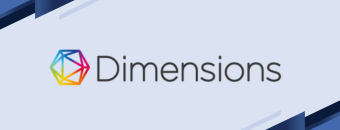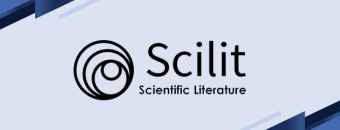Moodiary: Aplikasi Pencatat Suasana Hati
DOI:
https://doi.org/10.61220/scientist.v3i1.20254Keywords:
Mood Tracking, Android Application, Firebase, Self-Awareness, Emotional ReflectionAbstract
Moodiary is an Android application developed to help users track their moods and daily activities, aiming to enhance self-awareness and emotional reflection. The app integrates Firebase Authentication for secure login and Firebase Realtime Database for real-time data storage. Featuring a minimalist and user-friendly interface, users can log their daily moods, write short personal narratives, and monitor emotional trends through data visualizations. Moodiary was developed using the Agile methodology, enabling iterative development based on user needs. Key features include icon-based mood tracking, mood history charts, daily reminders, and profile customization. Functional and non-functional testing results show excellent performance in terms of availability, reliability, security, and user experience. Thus, Moodiary serves as an effective digital solution to support mental well-being and self-reflection, particularly for mobile users seeking fast, secure, and personalized emotional tracking tools.
Downloads
References
F. Anwar and P. Julia, “Analisis Strategi Pembinaan Kesehatan Mental Oleh Guru Pengasuh Sekolah Berasrama Di Aceh Besar Pada Masa Pandemi,” J. Edukasi J. Bimbing. Konseling, vol. 7, no. 1, pp. 64–83, 2021.
J. Xiong, O. Lipsitz, F. Nasri, L. M. W. Lui, H. Gill, and L. Phan, “Since January 2020 Elsevier has created a COVID-19 resource centre with free information in English and Mandarin on the novel coronavirus COVID- 19 . The COVID-19 resource centre is hosted on Elsevier Connect , the company ’ s public news and information website . Elsevier hereby grants permission to make all its COVID-19-related research that is available on the COVID-19 resource centre - including this research content - immediately available in PubMed Central and other publicly funded repositories , such as the WHO COVID database with rights for unrestricted research re-use and analyses in any form or by any means with acknowledgement of the original source . These permissions are granted for free by Elsevier for as long as the COVID-19 resource centre remains active . Impact of COVID-19 pandemic on mental health in the general population : A systematic review,” no. January, 2020.
P. Literasi, K. Mental, K. Mental, P. Mahasiswa, and D. V. Fakhriyani, “Pengaruh Literasi Kesehatan Mental Terhadap Kesehatan Mental Pada the Effect of Mental Health Literacy on Mental Health in Students of,” vol. 19, no. 1, pp. 52–65, 2024.
J. Torous et al., “HHS Public Access,” vol. 17, no. 8, 2015, doi: 10.1007/s11920-015-0602-0.Realizing.
D. D. Luxton, R. A. McCann, N. E. Bush, M. C. Mishkind, and G. M. Reger, “MHealth for mental health: Integrating smartphone technology in behavioral healthcare,” Prof. Psychol. Res. Pract., vol. 42, no. 6, pp. 505–512, 2011, doi: 10.1037/a0024485.
D. Bakker, N. Kazantzis, D. Rickwood, and N. Rickard, “Mental health smartphone apps: Review and evidence-based recommendations for future developments,” JMIR Ment. Heal., vol. 3, no. 1, pp. 1–31, 2016, doi: 10.2196/mental.4984.
S. D. Kauer et al., “Self-monitoring using mobile phones in the early stages of adolescent depression: Randomized controlled trial,” J. Med. Internet Res., vol. 14, no. 3, pp. 1–17, 2012, doi: 10.2196/jmir.1858.
L. Alsaber, E. Al Elsheikh, S. Aljumah, and N. S. M. Jamail, “‘Scrumbear’ framework for solving traditional scrum model problems,” Bull. Electr. Eng. Informatics, vol. 10, no. 1, pp. 319–326, 2020, doi: 10.11591/eei.v10i1.2487.
U. W. Ebner-Priemer and T. J. Trull, “Ecological Momentary Assessment of Mood Disorders and Mood Dysregulation,” Psychol. Assess., vol. 21, no. 4, pp. 463–475, 2009, doi: 10.1037/a0017075.
M. M. Ng, J. Firth, M. Minen, and J. Torous, “User engagement in mental health apps: A review of measurement, reporting, and validity,” Psychiatr. Serv., vol. 70, no. 7, pp. 538–544, 2019, doi: 10.1176/appi.ps.201800519.
M. Al-Zewairi, M. Biltawi, W. Etaiwi, and A. Shaout, “Agile Software Development Methodologies: Survey of Surveys,” J. Comput. Commun., vol. 05, no. 05, pp. 74–97, 2017, doi: 10.4236/jcc.2017.55007.
P. NUGRAHA, “Sistem Informasi Penerimaan Peserta Didik Baru Berbasis Web Pada Sma Mardiyuana,” Academia.Edu, vol. 3, pp. 98–113, 2023, [Online]. Available: https://www.academia.edu/download/57561989/Tugas_Akhir.pdf
S. Sandfreni, M. B. Ulum, and A. H. Azizah, “Analisis Perancangan Sistem Informasi Pusat Studi Pada Fakultas Ilmu Komputer Universitas Esa Unggul,” Sebatik, vol. 25, no. 2, pp. 345–356, 2021, doi: 10.46984/sebatik.v25i2.1587.
P. Sistem, J. Beli, B. Pokok, P. Berbasis, and A. Mobile, “Jurnal Informatika Terpadu,” vol. 5, no. 2, pp. 49–55, 2019.
P. Tiga, B. Berbasis, and B. Web, “Abstrak: Perkembangan teknologi yang sangat pesat dan fasilitas-fasilitas pendukung yang semakin banyak, masyarakat mulai menggunakan berbagai layanan yang bersifat komputerisasi karena lebih mudah dan banyak pilihan yang dapat mempermudah segala kebutuha,” vol. 3, no. 2, pp. 354–361, 2021.
A. Medikano, R. P. Sumartono, T. A. Agustina, N. A. Aisyah, and R. Wirawan, “Perancangan Aplikasi Android E-Learn Armeta Dengan Pendekatan Meode Waterfall,” J. Sist. Inf. dan Apl., vol. 1, no. 1, pp. 34–49, 2023, doi: 10.52958/jsia.v1i1.6450.
A. S. A. Y. Co, “PERANCANGAN USER INTERFACE DAN USER EXPERIENCE,” vol. 9, no. April, 2022.
D. P. Dewi, “Hubungan Karakteristik Smartphone pada Perubahan Budaya Komunikasi Remaja di RT 12 Keluarahan Sempaja Selatan Samarinda,” eJournal Ilmu Komun., vol. 5, no. 1, pp. 01–12, 2017.
W. Kurniawan, I. Prihandi, and O. Connect, “PROTOTYPE FIREBASE AUTHENTICATION MENGGUNAKAN FITUR FIREBASE PADA APLIKASI,” vol. 4, no. 1, pp. 71–78, 2019.
L. Ramadhani, R. Amalia, and F. Puspita, “Implementasi Firebase Realtime Database Pada Aplikasi Integrated Perpustakaan Smk Prestasi Prima,” Semin. Nas. Ris. dan Teknol. (SEMNAS RISTEK) 2021, pp. 283–288, 2021.
F. M. Fowler, “The Product Backlog BT - Navigating Hybrid Scrum Environments: Understanding the Essentials, Avoiding the Pitfalls,” F. M. Fowler, Ed., Berkeley, CA: Apress, 2019, pp. 59–66. doi: 10.1007/978-1-4842-4164-6_9.
G. H. P. Dotulong, M. H. Ch Pandowo, and M. H. Rogi, “Pengaruh Personality, Mood, Dan Lingkungan Kerja Terhadap Semangat Kerja Pegawai Pada Biro Umum Sekretariat Daerah Provinsi Sulawesi Utara,” J. EMBA, vol. 12, no. 1, pp. 50–59, 2024.
Downloads
Published
Citation
Issue
Section
License
Copyright (c) 2025 Anggi Diva Ananta, Muhammad Faturrahman Nur, Syawal Saputra S. (Author)

This work is licensed under a Creative Commons Attribution-ShareAlike 4.0 International License.
























